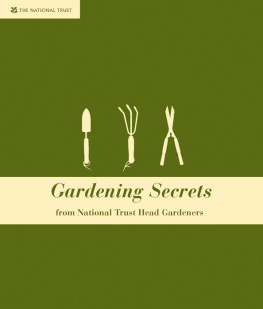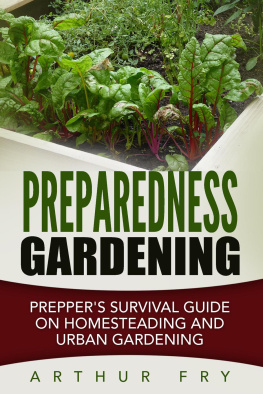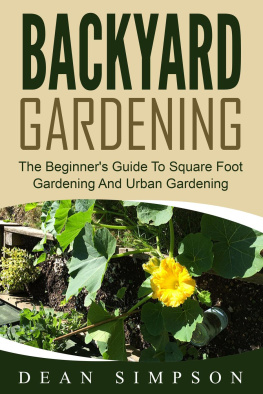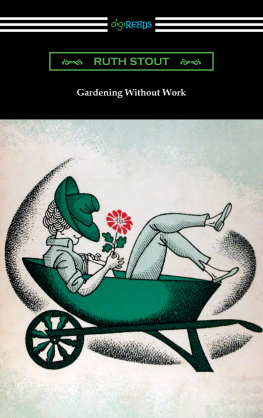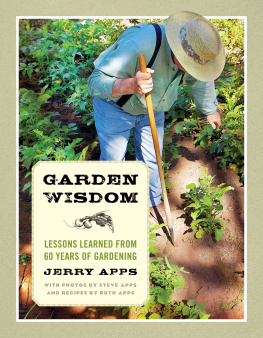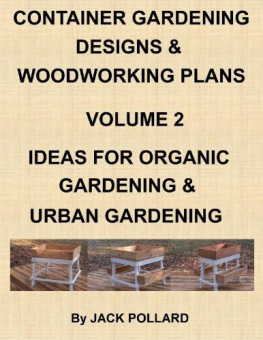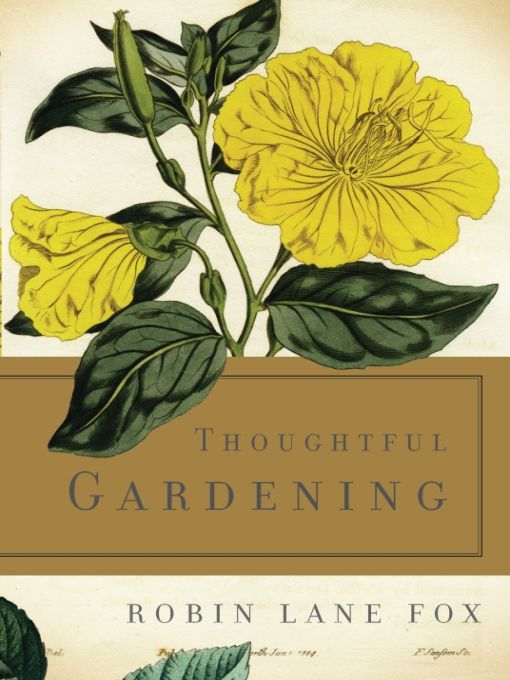Table of Contents
The practising gardener is always a Martha; it is Mary who sits back in admiration, saying how pretty that looks! Mary thinks it has just happened, as a gift from heaven; Mary is a dreamer, overlooking the practical pains and trouble that have gone to the making of the effect Mary admires. Mary can just sit. Martha, if she can spare the time for it, can and must sit and think.
VITA SACKVILLE-WEST, IN THE OBSERVER NEWSPAPER, 6 OCTOBER 1957
PREFACE
MOST PEOPLE BEGIN TO GARDEN only when they have a garden of their own, and some people begin only when their most important seedlings, their own children, have grown up. A few of us began gardening much earlier, in our own parents space and time. I began when I was ten years old and by the age of twelve was a seriously keen grower of alpine plants. I have continued ever since, widening the range of plants I have known, grown, and killed personally. I cannot fully express what gardening has added to my life, ever-present in my mind and increasingly in my muscles, and always adding more to what I notice in the daily course of living. It has also brought many remarkable people to me, a few of whom this book honors. It has deepened what I find in books and poems and in great paintings, the identity of whose flowers is so seldom considered by their curators and historians.
This book aims to look at gardening from many different aspects, swiftly changing as if under a kaleidoscope. So much more could have been included, but I like the variety and balance in what it contains. I believe I have grown all the plants it mentions if they are plants that grow outdoors on alkaline soil. When I left school I worked for some months in the great Botanical Garden in Munich, where I was assigned to the fine Alpinum with its geographically arranged mountain flora and its acres of imported rock, brought in by railway in the first decade of the twentieth century. I have never forgotten the lessons I learned or the human dramas of those days, but I am less willing nowadays to begin work before 7 A.M. and I no longer line up with seventy-seven others to be ticked off on lists kept by the gardens Gruppenfhrer in a pleasantly earthy seed room. I regret the loss of the edelweiss braces that held up my trousers, but this book recalls subsequent lessons, many learned in great English gardens where I have lived or been a frequent visitor. Above all it is based on my good fortune in being responsible for two very different types of garden: the big garden round my Oxford college and the two-acre garden round my house on poor stony soil in the Cotswolds.
Many of my chapters have grown and evolved from articles first written for the Financial Times, for which I have been a weekly columnist on gardening for no less than forty uninterrupted years. In January 1970 I was offered a trial column by the papers legendary editor, Gordon Newton, in the belief that the FT needed brightening up on Wednesdays. I even survived my initial observation that the flowers on the great mans desk were plastic, but I did not expect him to become an ever keener gardener, growing excellent fuchsias and much else in his years of retirement. I sometimes wonder where the impetus to write, usually so happily, comes from each week. I trace its roots to my Eton days at boarding school, where I used to read E. B. Andersons superb book on rock gardening by flashlight under the bedclothes, and where my request for special leave to visit the Chelsea Flower Show was known to be genuine and was duly granted, but only with a female chaperone, my tutors wife, in case I cut loose among the rival attractions of London. I would not even have known how to find them. In Windsors nearly public library I then tracked down the books of gardening articles by Vita Sackville-West, written for The Observer between 1946 and 1961. They remain the best gardening articles that I and so many others have read, and I never imagined that one day I would be asked to reread her work in full and present another selection of it. After discovering these short masterpieces, which she herself professed to disdain, I became joint editor of the school newspaper, the Eton Chronicle, and even then, the writing of casual columns and editorials struck me as something I could do and whose deadlines I enjoyed.
Years of undergraduate terms in Oxford then followed in which active gardening was impossible, although I made up for some of the loss by enjoying the setting of my then colleges Addisons Walk, at that time the most beautiful tamed landscape in England. Early Christian desert fathers sometimes hint at the pull of the desert in their ascetic decision to abandon the settled world. Addisons Walk and its meadows glory, its wild fritillaries, exerted some of the pull behind my realization that I, too, would never wholly live in everyday society. At that time I was writing essays twice weekly for my tutors and I thought that as I could do two, it would be easy to write only one, this time on the gardening I loved. I never imagined that I would write more than 2,000 consecutively.
I owed my crucial editorial interview to the interest of Pat Gibson and also to the instincts of Lord Drogheda, such important figures in the FT companys life and examples of how to encourage young aspirants to see if they can really perform. I have since owed much to the apt laissezfaire approach of successive editors, especially Geoffrey Owen, Richard Lambert, and nowadays Lionel Barber. For years I contributed in handwriting or by telephone and I thank especially Mary Dorwald and the varied teams of FT copytakers, headed by the imperturbable Mandy with whom I, like many others, had the ideal telephone relationship before she emigrated, without ever meeting me in person, while her supporting staff withdrew to new lives in bars across the Mediterranean.
My gardening is done in time stolen from other work, as it is also done in the lives of so many FT readers. I owe special debts to helpers and encouragers in the garden, especially my parents and our beloved gardener Leslie Aris in distant years that seem like yesterdays, and those who help me regularly nowadays, Marius Hardiman and Jim Marriott and their respective teams in Oxford, and Marcia Little and Terry Wheeler at my home. Not all the great moments in gardening are solitary and I and my present garden owe much to our duet with Caroline Badger at a crucial time.
As for this book, Stuart Proffitt made me write it, a far more demanding task than I anticipated. Many people in recent years have told me to do it and one or two have tried to buy it in bookshops before it was even commissioned. I am immensely grateful to Tatjana Mitevska for her skilled work in retrieving long-lost bits of text and her ebullient support in so many ways. Neil OSullivan deserves special thanks for his intelligent editing over the years and his patience with my anxious transition to a digital future. Nicholas Spencer and Raphael Abraham are worthy successors in the weekly turmoil of FT life. My pupils Robert Colborn and Henry Mason skillfully decoded and typed my text, while retaining an amused incredulity at subjects so far removed from their own. Jane Bird-sell was the most penetrating questioner as copyeditor and practicing gardener and has saved me from several errors. I am particularly grateful for the kind guidance of the many libraries, photographers, nurseries, and Dr. Jane Lightfoot, who helped me with the business of finding or taking relevant pictures. Dr. Claudia Wagner rose to the challenge of tracing so much, so far removed from her expertise in classical art and engraved gems.








